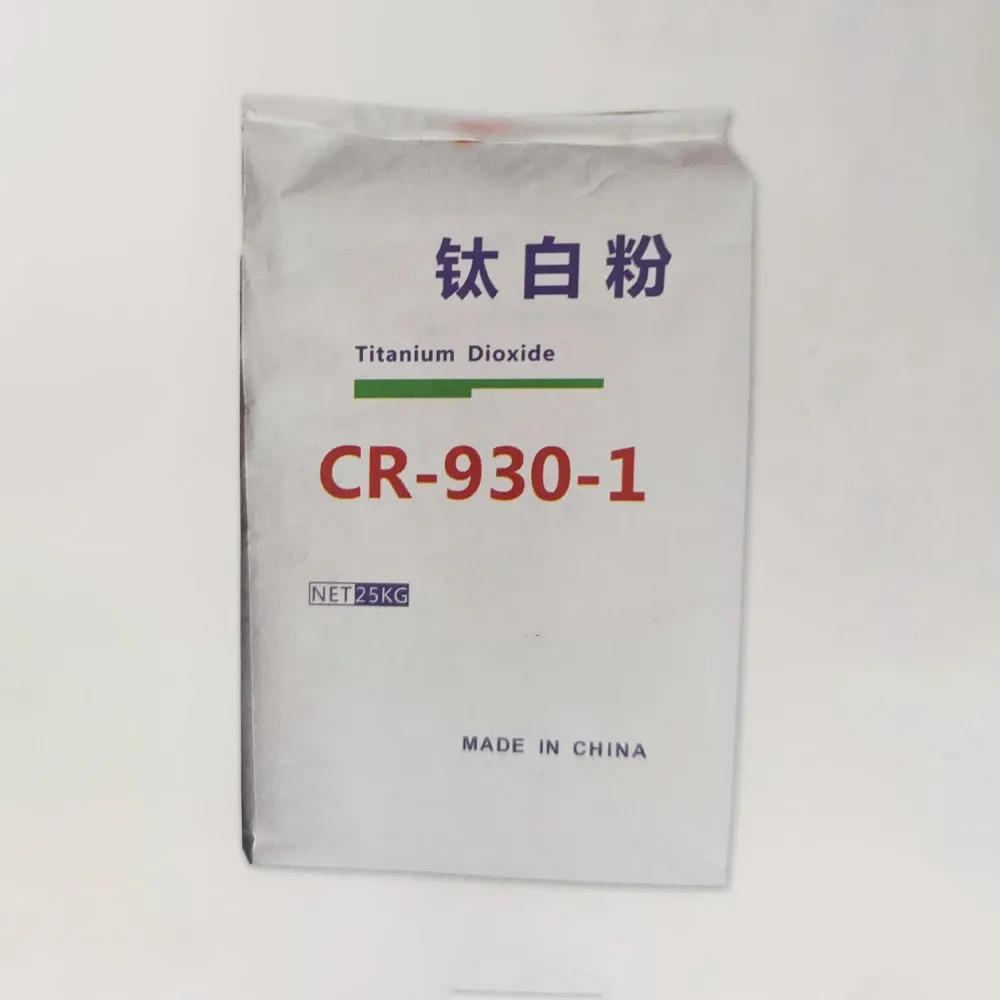
Th8 . 11, 2025 17:14 Trở lại danh sách
Using Rutile Titanium Dioxide in Fiber and Textile Coatings
titan dioxit (TiO₂) is a versatile inorganic pigment widely used across various industries, including paints, plastics, cosmetics, and textiles. Among its different forms, titan dioxide rutile is particularly valued for its superior optical properties, chemical stability, and durability. In the textile industry, titanium dioxide powder is extensively used in fiber and fabric coatings to enhance whiteness, opacity, and UV resistance.

Why Choose Rutile Titanium Dioxide for Textile Coatings?
Superior Optical Properties
Rutile titanium dioxide has a higher refractive index compared to its anatase counterpart, making it exceptionally effective at scattering light. This property is crucial in textile coatings, where achieving bright whiteness and opacity is essential. When applied as a titanium dioxide powder coating, it enhances the fabric's appearance, making colors appear more vibrant and preventing substrate visibility.
Enhanced UV Protection
One of the critical advantages of using titan dioxide rutile in textiles is its ability to block harmful ultraviolet (UV) radiation. Unlike organic UV absorbers that degrade over time, TiO₂ provides long-lasting protection, making it ideal for outdoor fabrics, sportswear, and protective clothing. The photocatalytic activity of rutile TiO₂ is also lower than anatase, reducing potential fiber degradation.
Durability and Chemical Stability
Textile coatings must withstand repeated washing, abrasion, and exposure to environmental factors. Rutile titanium dioxide exhibits excellent chemical resistance, ensuring that coated fabrics maintain their aesthetic and functional properties over time. This stability makes it a preferred choice for high-performance textiles in automotive, medical, and industrial applications.
Manufacturing and Application of Titanium Dioxide in Textiles
Processing Titanium Dioxide Powder for Coatings
The effectiveness of titanium dioxide powder in textile coatings depends on its particle size distribution and dispersion properties. Manufacturers often surface-treat TiO₂ particles to improve compatibility with polymer matrices used in coatings. Proper dispersion ensures uniform coverage, preventing agglomeration that could affect fabric smoothness and durability.
Coating Techniques
Several methods are employed to apply titan dioxide rutile onto fibers and fabrics:
Padding: Fabrics are immersed in a TiO₂ dispersion and passed through rollers to remove excess liquid before curing.
Spray Coating: A fine mist of titanium dioxide powder suspension is sprayed onto the fabric surface, allowing for controlled deposition.
Screen Printing: Used for localized applications, where TiO₂ paste is pressed through a patterned screen onto the fabric.
Each technique offers distinct advantages depending on the desired coating thickness, uniformity, and production scale.
Role of a Reliable Titanium Dioxide Manufacturer
Selecting a reputable titanium dioxide manufacturer is crucial to ensure consistent quality. Leading suppliers provide TiO₂ grades specifically optimized for textile coatings, with tailored particle sizes and surface treatments. Additionally, manufacturers offering competitive rutile titanium dioxide price without compromising quality help textile producers maintain cost-efficiency.
titan điôxít Market Trends and Pricing Considerations
Factors Influencing Rutile Titanium Dioxide Price
The rutile titanium dioxide price is affected by several factors, including:
Raw Material Availability: Fluctuations in titanium ore supply impact production costs.
Energy Costs: TiO₂ manufacturing is energy-intensive, making fuel prices a significant cost driver.
Demand-Supply Dynamics: Growing demand from the textile, paint, and plastics industries influences pricing trends.
Textile manufacturers must monitor these factors to optimize procurement strategies and maintain profitability.
Sustainability and Future Developments
With increasing environmental regulations, titanium dioxide manufacturers are investing in sustainable production methods. Eco-friendly processing techniques, such as chloride process optimization and recycling of byproducts, are gaining traction. Additionally, research into nano-sized titan dioxide rutile could open new possibilities for lightweight, high-performance textile coatings.
Rutile titanium dioxide plays a pivotal role in enhancing the performance and aesthetics of fiber and textile coatings. Its superior light-scattering ability, UV resistance, and durability make it indispensable in modern textile manufacturing. When selecting titanium dioxide powder, textile producers must consider factors such as dispersion quality, coating techniques, and the reliability of the titanium dioxide manufacturer.
While the rutile titanium dioxide price remains a key consideration, the long-term benefits of using high-quality TiO₂ justify the investment. As the industry moves toward sustainable practices, advancements in TiO₂ production will further solidify its position as a cornerstone of textile innovation.
By leveraging the unique properties of titan dioxide rutile, textile manufacturers can develop advanced fabrics that meet evolving consumer and industrial demands.
Đây là bài viết cuối cùng
-
Using Rutile Titanium Dioxide in Fiber and Textile Coatings
Tin tứcAug.11,2025
-
Is Titanium Dioxide Exterior Paint More Suitable for Commercial Buildings or Residential Buildings?
Tin tứcAug.11,2025
-
How Titanium Dioxide Makes Your Exterior Wall Color More Durable and Non-Fading
Tin tứcAug.11,2025
-
Enhancing Wall Brightness with Titanium Dioxide Water-Based Paints
Tin tứcAug.11,2025
-
Choosing Rutile Titanium Dioxide for Long-Lasting Exterior Latex Paints
Tin tứcAug.11,2025
-
The Protective Role of Titanium Dioxide Against UV Degradation in Plastics
Tin tứcAug.08,2025
